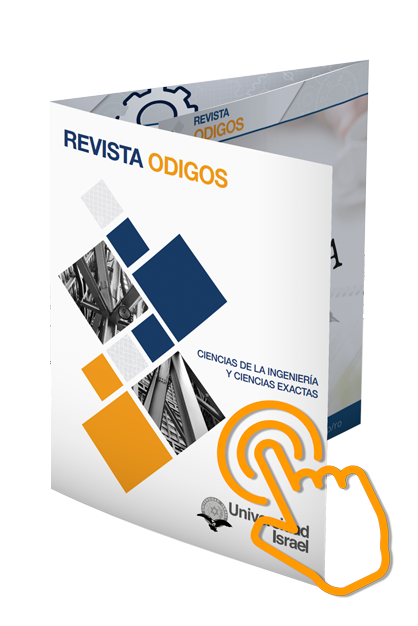Vol. 3 Núm. 2 (2022)

Nos complace presentar el número 2, volumen 3 de la Revista ODIGOS, el segundo del año 2022. En esta oportunidad ponemos a disposición de toda la comunidad académica 05 artículos como resultado de las investigaciones elaboradas con alta rigurosidad científica y metodológica, y que aportan significativamente a diversas áreas del conocimiento.
Como en todas nuestras publicaciones, los trabajos presentados han pasado por un proceso de selección, arbitraje, corrección y edición, que van en correspondencia con las líneas aprobadas por la Universidad Tecnológica Israel, entidad editora de nuestra revista.
En este sentido, los trabajos que se presentan son:
“Internet of things system for ultraviolet index monitoring in the community of Chirinche Bajo” es el título del primer artículo que se presenta, en este, los autores determinan como objetivo desarrollar un sistema tecnológico basado en Internet de las Cosas (IoT) para informar del índice rayos ultravioleta (UV) al que se encuentran expuestos los agricultores de la comunidad de Chirinche Bajo en Ecuador y tomen precauciones para salir a sus labores cotidianas. El artículo es un aporte inicial para crear una cultura de información y desarrollo tecnológico en las zonas agrícolas rurales del Ecuador.
El segundo trabajo publicado lleva por nombre “Gestión en el proceso de búsqueda de eventos en un rango variable de 50 km de distancia”, en el cual se propone el desarrollo de una aplicación móvil para la notificación de eventos nuevos con una cercanía de alrededor de 50 km; se considera esto solo para los lugares próximos a Quito. El principal objetivo de este trabajo es mejorar el conocimiento para los usuarios de la creación de nuevos eventos culturales o de diversión, cercanos a su ubicación geográfica, mediante el uso de un App para la plataforma de Android para la parte de front-end y un API en Laravel para el back-end.
Por otra parte, los autores de “Sistema purificador de ambientes para oficinas con monitoreo mediante IOT” presentan el desarrollo de un sistema purificador de ambientes automatizado para oficinas de 30 metros cuadrados y con monitoreo mediante una plataforma de Internet de las Cosas (IoT). Esta plataforma despliega los datos de temperatura, humedad y concentración de ozono para establecer las curvas de operación y los tiempos de trabajo del equipo. Así, es posible para los usuarios acceder y verificar la información desde cualquier lugar con una conexión a internet.
Mientras que en “Inteligencia artificial y visión por computadora aplicada a la educación”, se presenta una revisión de literatura o bibliográfica sobre las nuevas tecnologías como: inteligencia artificial, la visión por computadora, las herramientas de MediaPipe y aprendizaje automático, con el objetivo de generar una propuesta de tecnología que permita mejorar la calidad de las clases. Se describe la situación actual que tienen los estudiantes respecto a las clases en modalidad virtual, se incluyen y explican tanto definiciones, como el funcionamiento de los distintos temas, al igual que se incluyen aplicaciones de ellos en la vida cotidiana.
Finalmente, el último trabajo: “Balanceo y despliegue de carga en aplicaciones web mediante kubernetes”, propone el desarrollo de un despliegue DevSecOps que resuelve la necesidad de automatizar de una manera óptima y segura la gestión de proyectos web, mediante la utilización de las buenas prácticas DevSecOps. El proceso inicia implementado un proyecto con un Framework Laravel se almacena en el repositorio Git y se genere a partir de la rama principal una imagen de contenedor, la misma que se desplegará de manera automática en un clúster de Kubernetes con el uso de flujo de acciones.
El impacto de estas investigaciones, dentro de la comunidad científica, permitirá replantear modelos y herramientas para generar propuestas de intervención que contribuyan con la solución de ciertos problemas existentes en la sociedad, relacionados con los temas aquí tratados.
De esta manera, dejamos a disposición de los lectores este material de transferencia y difusión del conocimiento.
Mg. Renato M. Toasa
Editor Revista Odigos



